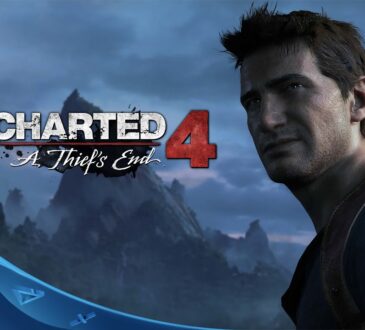After scouting the display ground at the Tokyo Game Show 2009, Keiji Inafune came to a grim conclusion: “When I looked at all of the one-of-a-kind video games on the occasion floor, I said, ‘Man, Japan is over. We’re completed. Our game enterprise is finished.'”

The famed sports clothier, who cut his teeth at the Mega Man series and later launched the AAA franchise, Dead Rising, realized within the sprawling halls of the Makuhari Messe conference center that his home country of Japan, as soon as the chief of the video game industry, had fallen. In its area atop the market — and across the venue — stood Western-made blockbusters like Assassin’s Creed and Call of Duty.
However, a specific scene is expected per Tokyo Game Show 2017 procedures. This year, Japanese video games aren’t merely alive but experiencing a global renaissance. Many of the maximum first-rate titles in 2017, each severely and commercially, were developed in Japan. It honestly started in late November, with the lengthy-awaited launch of Final Fantasy XV, and was accompanied by Resident Evil 7 and Gravity Rush 2 in January, and Persona 5, Nier: Automata, Yakuza Zero, Noah, Hatsune Miku Project Diva Future Tone, and The Legend of Zelda: Breath of the Wild over the following months.
RELATED ARTICLES :
- Moto Mods Lineup Gets 6 Additions, Including 360 Degree Camera and Marshall Speaker
- Are You A Naturally Born Blogger?
- The Casual Gamer’s Guide to Video Gaming in 2017
- How You Can Start Working As a Travel Blogger Right Now
- Sega launches unfastened, unfashionable sports series for iPhone and Android
Persona 5 shipped momore than 1.5 million copies days after its worldwide launch, while Nier: Automata sold 1.5 million. Breath of the Wild sold more gadgets than the Nintendo Switch at launch: a fantastic 925,000 copies inside the US, compared to 906,000 devices of the Switch itself. This month, the maximum predicted titles validated at the annual E3 video games conference were also from Japan, including Monster Hunter World and Super Mario Odyssey.
So, what was modified between 2009 and today?
The current online game crop is diverse in the genre — position-gambling, action-journey, rhythm — however, what unifies the projects is how they embody a number of the present-day developments of Western video games without betraying the techniques that helped launch Japan’s top popular franchises many years ago: an abundance of creativity, a willingness to take risks, and a appreciate for the mechanics that underpin traditional video games. Whereas Western games regularly want immersion and spectacle, thrusting players into increasingly more realistic worlds and trimming away “gamey” visual design, Japanese games often embody their inherent mechanicalness. It’s not unusual to see complicated menus, reams of textual content-based dialogue, or arcade-like movement in present-day Japanese releases.
For instance, present-day Resident Evil, which switches the collection to first-man or woman horror journey, is a genre that has lately been popularized using YouTube sensations like Outlast. While the visual shift is dramatic, the sport builds upon plenty of identical structure and good judgment because 1996 is a unique, end of gradual-paced horror and cryptic puzzles. Its inventory device is particularly recreation-y, requiring the player to keep objects inside constrained slots on a grid. Far more so than its predecessors, Resident Evil 5 and 6, titles that mimicked the least exciting bits of dude-bro Western shooters, Resident Evil 7 appears like a go-back to form.
Breath of the Wild, meanwhile, sees the collection move into the realm of Grand Theft Auto and Far Cry, supplying a sizable open globally for gamers to explore. Yet, it’s in contrast to any entry to the genre made by using a Western studio. Instead of inundating players with a map crowded with dreams and quest icons, it hhas a different free-shape shape, allowing gamers to discover at their own pace and mark their objectives. It isn’t in contrast to the first actual Zelda, a sport that, in hindsight, toyed with open, unpredictable areas long before they became de rigueur. And in comparison to its contemporaries, Breath of the Wild isn’t a game anchored by violence. There’s combat, positive, but the crux of the sport relies on fixing masses of puzzles and traversing significant landscapes to find secrets.
Of course, Japanese creators’ idea of appealing to external audiences by constructing upon Western layout developments isn’t exactly new. In the past, however, many such attempts felt less like a mix and more like a collision, frequently with one design technique sloppily overpowering the opposite. The sixth Resident Evil is perhaps the most evident example. It pulled the collection far from its horror roots, with a much greater recognition of taking pictures and movement that didn’t compare favorably to typical blockbuster releases. It changed into missing the spark that made Resident Evil such an iconic series simultaneously. It indicated a failure to grasp what audiences out of doors of Japan wanted.
“I assume there was a length when what Japanese builders were trying to say with their video games wasn’t getting throughout globally,” says Ryozo Tsujimoto, a longtime manufacturer of the Monster Hunter series. “That message wasn’t getting through. I suppose it’s a remember of Japanese builders mastering what it approaches to position out a game aiming at an international market. An increasing number of mastering people know how to talk the language of the worldwide gaming target audience.”
There are different triumphing theories on why Japan commenced struggling within the mid-2000s. First, there’s the developing prominence of cell games that have largely supplanted the console area in Japan, becoming hugely more significant and lucrative at the same time as being made for a fragment of the price. Portable gaming has constantly been famous in Japan, and the appearance of smartphones multiplied this. Meanwhile, Western builders focused on massive-budget cinematic titles designed to be performed on massive, high-definition TVs. This shift, in a few methods, left Japanese creators at a technological downside.




